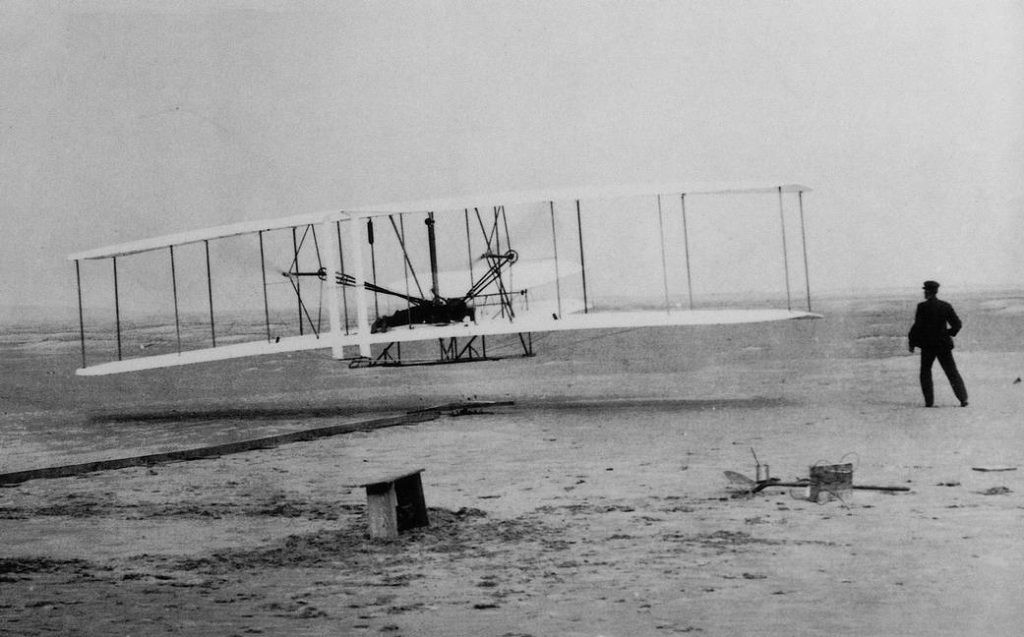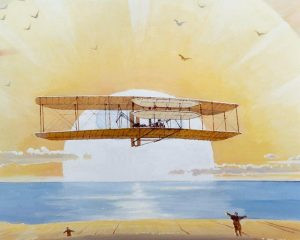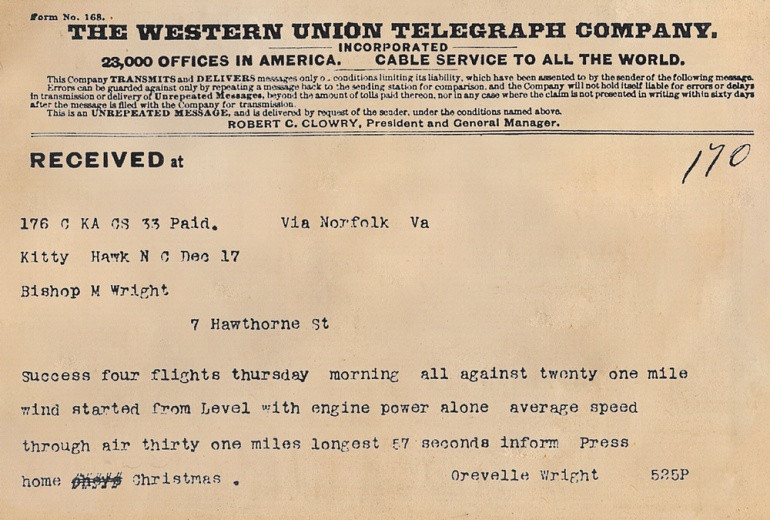On December 17, 1903, history was made on the sandy dunes of Kitty Hawk, North Carolina. This date marks the answer to the question, “When Did The Wright Brothers First Fly A Plane?” It was on this day that Orville and Wilbur Wright, two brothers from Ohio, achieved the seemingly impossible: sustained, controlled, powered flight in a heavier-than-air machine. Their invention, the Wright Flyer, lifted off the ground, albeit briefly, and ushered in the age of aviation, forever changing transportation and warfare, and shrinking the world in ways previously unimaginable. This pivotal moment was not just a single flight; it was the culmination of years of tireless research, experimentation, and unwavering determination.
The Historic First Flights at Kitty Hawk
The morning of December 17th was cold and windy, hardly ideal conditions for flight. Undeterred, the Wright brothers prepared their aircraft, the Kitty Hawk Flyer, for its inaugural powered flight. The first attempt was piloted by Orville Wright at 10:35 AM. The Flyer struggled against the headwind, staying airborne for a mere 12 seconds and covering a distance of 120 feet (not 180 feet as initially reported in some accounts). While short, this flight was groundbreaking – it was the first recorded instance of a successful controlled flight of a powered, heavier-than-air machine with a pilot onboard.
 The Wright Flyer Airborne
The Wright Flyer Airborne
Following the first successful flight, Wilbur took his turn at the controls. Throughout the day, they made three more attempts, each flight progressively longer and more controlled. The fourth and final flight of the day, piloted by Wilbur, was the most impressive. He flew the Flyer for 59 seconds, covering a distance of 852 feet. These four flights on that single day definitively proved that powered human flight was not just a dream, but a reality.
However, the day wasn’t without its setbacks. Shortly after the final flight, a strong gust of wind caught the Kitty Hawk Flyer while it was on the ground, flipping it over and causing significant damage. The aircraft was too damaged to fly again, but its purpose had been served. It had demonstrated the possibility of powered flight to the world.
The Wright Brothers: From Bicycles to Breakthroughs in Aviation
Orville and Wilbur Wright were more than just lucky inventors; they were meticulous engineers and persistent experimenters. Their journey to that historic day in Kitty Hawk began years earlier, fueled by a childhood fascination with flight. Inspired by a toy helicopter their father brought home, they delved into the science of aeronautics.
Before their aviation exploits, the Wright brothers were successful businessmen, owning a bicycle shop in Dayton, Ohio. This experience proved surprisingly relevant to their aviation pursuits. Bicycle mechanics taught them about balance, control, and lightweight construction – all crucial elements in designing a successful flying machine.
They systematically studied the work of earlier aviation pioneers and conducted their own wind tunnel experiments to understand the principles of lift and drag. They meticulously tested different wing designs and control surfaces, refining their concepts through countless glides at Kitty Hawk in the years leading up to 1903. Kitty Hawk was chosen specifically for its consistent winds and soft sandy ground, ideal for testing their gliders and, eventually, their powered machine.
 Courtesy of NASA. Bob McCall
Courtesy of NASA. Bob McCall
The engine that powered the Kitty Hawk Flyer was a testament to their ingenuity. They designed and built their own lightweight gasoline engine, with the help of their mechanic Charlie Taylor. This engine, producing 12 horsepower, was crucial for achieving sustained flight. The propellers were also meticulously designed by the brothers, understanding that efficient propulsion was as vital as lift and control.
Fascinating Facts Surrounding the Wright Brothers’ First Flight
Beyond the well-known narrative, several lesser-known facts add depth to the story of the Wright brothers’ groundbreaking achievement:
-
From Print to Flight: Before their fascination with flight consumed them, the Wright brothers were involved in the printing business. They owned a local newspaper, the West Side News, showcasing their entrepreneurial spirit and communication skills even before their aviation endeavors.
-
The Toy Helicopter Spark: Their interest in flight wasn’t a sudden inspiration. It was ignited by a small toy helicopter brought back by their father in 1878. This simple toy, based on the designs of French aviation pioneer Alphonse Pénaud, sparked a lifelong passion.
-
Kitty Hawk’s Windy Advantage: Kitty Hawk wasn’t a random choice. The Wright brothers selected this remote location specifically for its consistently strong winds, essential for assisting early gliders and providing lift for their experiments. They had already conducted over 700 glider flights there by 1902.
-
Engine Innovation: The Wright brothers’ engine was a marvel of engineering for its time. Tasked to create an engine under 200 lbs with at least 8 horsepower, they designed a 12-horsepower engine with Charlie Taylor. Uniquely, it ran at full speed constantly, controlled by adjusting camshaft timing, demonstrating their innovative approach to problem-solving.
-
Unexpected Weight Gain, Unexpected Thrust Boost: The Kitty Hawk Flyer ended up being heavier than planned, adding 125 pounds to the initial design weight. Fortuitously, their propellers generated 50% more thrust than they had initially anticipated, compensating for the added weight and contributing to the flight’s success.
-
Coin Toss for Destiny: Before the famed December 17th flight, a less successful attempt occurred on December 14th, resulting in a crash. To decide who would pilot the first official attempt, Wilbur and Orville tossed a coin. Wilbur won the toss but Orville ultimately piloted the first successful flight after the minor damage from the 14th was repaired.
-
Muted Media Response: Surprisingly, the first flight received minimal initial media attention. Despite notifying the press, only one local paper covered the event. Skepticism and disbelief were prevalent, highlighting the challenge of convincing the world of such a radical achievement.
-
Telegraphic Miscommunications: Even in announcing their triumph, errors crept in. The telegraph sent to their father to share the news misspelled Orville’s name and incorrectly stated the flight duration, a humorous detail in light of the momentous occasion.
 Telegraph sent by the Wright brothers to their father.
Telegraph sent by the Wright brothers to their father.
Conclusion: The Enduring Legacy of the First Flight
The answer to “When did the Wright brothers first fly a plane?” – December 17, 1903 – resonates far beyond a simple date in history. It represents the moment humanity broke free from earthly constraints and soared into the skies. The Wright brothers’ achievement at Kitty Hawk was not just the invention of the airplane; it was the birth of a new era. Within a few decades, their pioneering work paved the way for global air travel, space exploration, and countless technological advancements. Their legacy continues to inspire innovation and reminds us that even the most audacious dreams can take flight with perseverance, ingenuity, and a spirit of relentless exploration.